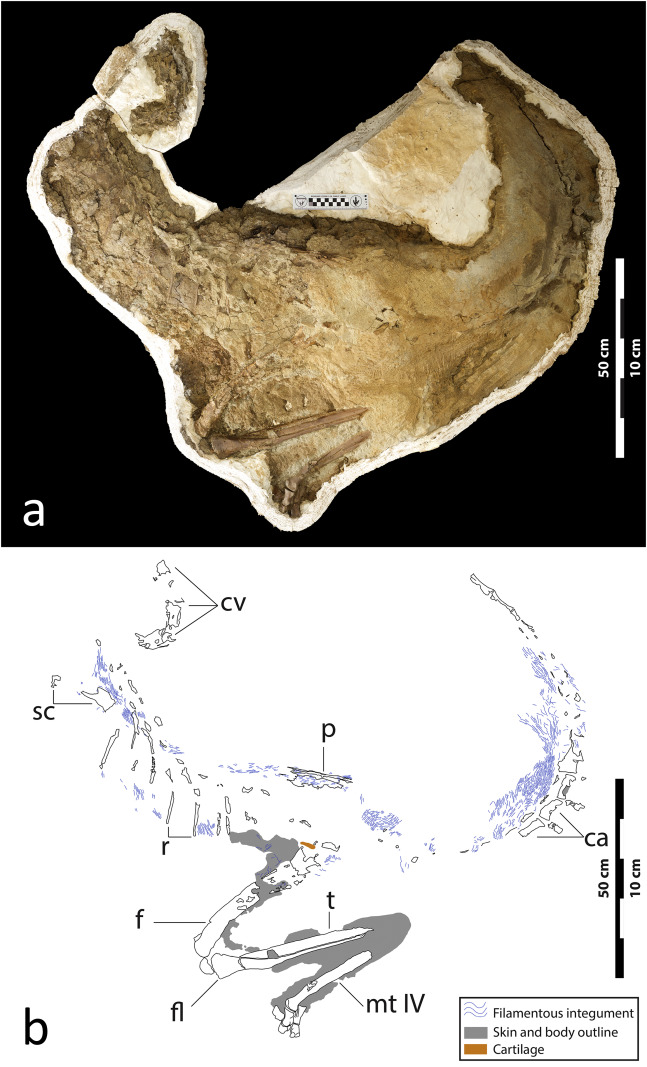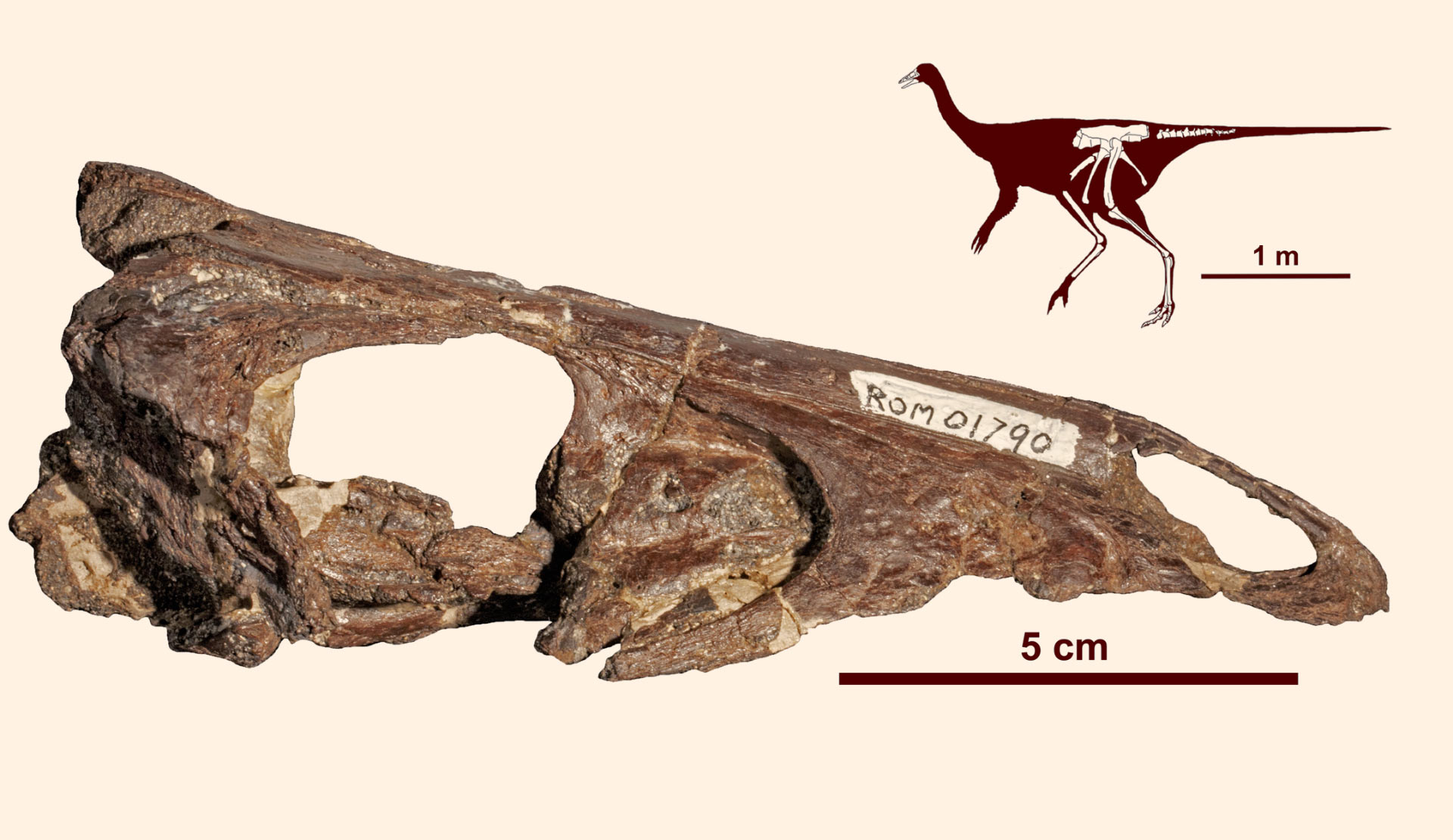
The ostrich-like dinosaurs in the original Jurassic Park movie were portrayed as a herd of scaly, fleet-footed animals being chased by a ferocious Tyrannosaurus rex. New research published in the prestigious journal Science reveals this depiction of these bird-mimic dinosaurs is not entirely accurate — the ornithomimids, as they are scientifically
The new study, led by paleontologists Darla Zelenitsky from the University of Calgary and François Therrien from the Royal Tyrrell Museum of Palaeontology, describes the first ornithomimid specimens preserved with feathers, recovered from 75 million-year-old rocks in the badlands of Alberta, Canada.

“This is a really exciting discovery as it represents the first feathered dinosaur specimens found in the Western Hemisphere,” says Zelenitsky, assistant professor at the University of Calgary and lead author of the study. “Furthermore, despite the many ornithomimid skeletons known, these specimens are also the first to reveal that ornithomimids were covered in feathers, like several other groups of theropod dinosaurs.”
The researchers found evidence of feathers preserved with a juvenile and two adults skeletons of Ornithomimus, a dinosaur that belongs to the group known as ornithomimids. This discovery suggests that all ornithomimid dinosaurs would have had feathers.

The specimens reveal an interesting pattern of change in feathery plumage during the life of Ornithomimus. “This dinosaur was covered in down-like feathers throughout life, but only older individuals developed larger feathers on the arms, forming wing-like structures,” says Zelenitsky. “This pattern differs from that seen in birds, where the wings generally develop very young, soon after hatching.”

Artistic reconstruction of feathered ornithomimid dinosaurs found in Alberta.
This discovery of early wings in dinosaurs too big to fly indicates the initial use of these structures was not for flight.
“The fact that wing-like forelimbs developed in more mature individuals suggests they were used only later in life, perhaps associated with reproductive behaviors like display or egg brooding,” says Therrien, curator at the Royal Tyrrell Museum and co-author of the study.

Darla Zelenitsky in Alberta badlands where the feathered dinosaurs were found.
Until now feathered dinosaur skeletons had been recovered almost exclusively from fine-grained rocks in China and Germany. “It was previously thought that feathered dinosaurs could only fossilize in muddy sediment deposited in quiet waters, such as the bottom of lakes and lagoons,” says Therrien. “But the discovery of these ornithomimids in sandstone shows that feathered dinosaurs can also be preserved in rocks deposited by ancient flowing rivers.”

Because sandstone is the type of rock that most commonly preserves dinosaur skeletons, the Canadian discoveries reveal great new potential for the recovery of feathered dinosaurs worldwide.
The fossils will be on display this fall at the Royal Tyrrell Museum in Drumheller, Alberta.





